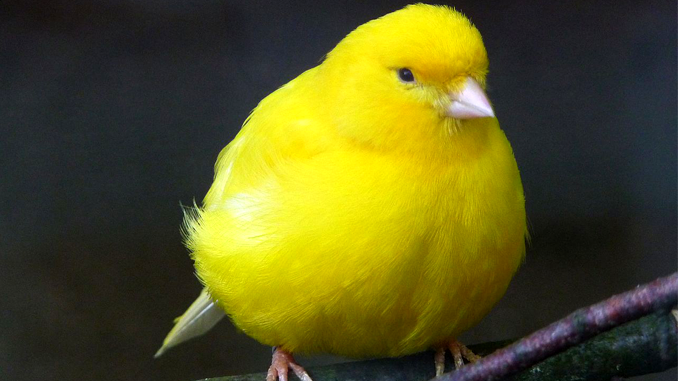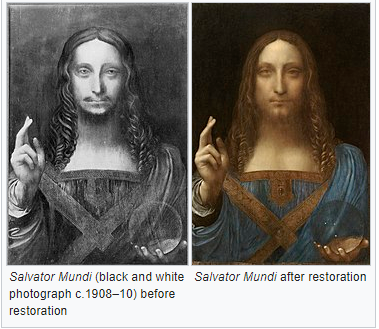
Known for being “the world’s most expensive painting sold at auction,” the Salvator Mundi – Savior of the World – is attributed to Leonardo di Vinci sold for a whopping $450,000,000 to the Saudi prince Bader bin Abdullah bin Mohammed bin Farhan al-Saud, a close ally of, and possible stand-in for, the Crown prince Mohammed bin Salman.
It was to be displayed at Louvre Abu Dhabi, but now staff there claim they have no idea of its whereabouts.
ABU DHABI, United Arab Emirates — The Louvre Abu Dhabi might seem to have all you could ask for in a world-class museum. Its acclaimed design shades its galleries under a vast dome that appears to hover over the waters of the Persian Gulf. Inside are works by Rembrandt and Vermeer, Monet and van Gogh, Mondrian and Basquiat.
Yet the work that the Louvre Abu Dhabi once promised would anchor its collection is conspicuously absent: “Salvator Mundi,” a painting of Jesus Christ attributed to Leonardo da Vinci.
NYT
Its premier was set to debut at the Louvre Abu Dhabi in September 2018,” but according to The Sunday Times, it has been missing since at least last fall.
Wanted: Leonardo da Vinci’s spectacular Salvator Mundi, the long-lost, then found painting of Christ — the “saviour of the world” — holding an orb. His enigmatic expression has led some to consider it the male Mona Lisa. The Renaissance master was thought to have painted fewer than 20 works, including The Last Supper, so when Salvator Mundi was authenticated less than a decade ago, it took on a mystical quality all of its own and, eventually, the heftiest price tag in history.
Yet, despite its enormous art-historical importance, those who care about it the most say they have no idea where the painting is — and they have concerns about how it is being cared for and how that could affect its condition.
The Sunday Times
Two weeks before the painting was to premier, Abu Dhabi’s Department of Culture and Tourism announced a postponement via tweet.
Now, the painting is shrouded in a new mystery: Where in the world is “Salvator Mundi”?
Although the Abu Dhabi culture department announced about a month after the auction that it had somehow acquired “Salvator Mundi” for display in the local Louvre, a scheduled unveiling of the painting last September was canceled without explanation. The culture department is refusing to answer questions. Staff of the Louvre Abu Dhabi say privately that they have no knowledge of the painting’s whereabouts.
NYT
According to an official source at the Louvre in Paris, which is owned by the French government and who licensed their name to the museum in Abu Dhabi, they are unable to locate the painting either. They were planning to display it marking the 500th year since di Vinci’s death this coming fall.
Noting that it was never clear how Abu Dhabi might have acquired the painting from the Saudis in the first place — whether by a gift, loan or private sale — some have speculated that Crown Prince Mohammed might simply have decided to keep it. The Saudi embassy in Washington declined to comment.
The 33-year-old crown prince may not be the painting’s first royal owner. Believed to have been painted around 1500, “Salvator Mundi” was one of two similar works listed in an inventory of the collection of King Charles I of England after his execution in 1649, Professor Kemp said. But the painting disappeared from the historical record in the late 18th century.

Vanity Fair reported in January that the Salvator Mundi is “thought to be the last known da Vinci painting in private hands, having a “sordid history in the 20th century.”
In 1958, the painting sold for about $60, as it was then considered to be painted by Bernardino Luini, a da Vinci follower. Over the years, critics have had their eyebrows raised about whether the painting is really a da Vinci. It was rediscovered in the U.S. in 2005, restored in 2007, and then studied at the Metropolitan Museum of Art and by other scholars in the following years.
In 2011, it was part of the blockbuster exhibition Leonardo da Vinci: Painter at the Court of Milan at the National Gallery in London. Russian businessman Dmitry Rybolovlev acquired the painting afterward from a Swiss art dealer, and Rybolovlev’s family trust later put it on auction at Christie’s in 2017. The going price quickly spiked to $450 million after a telephone war between two anonymous bidders, one of whom was later revealed to be Prince Bader.
Vanity Fair
“In a twist worthy of Dan Brown, the painting’s exact location has been reportedly unknown for at least a few months, mysteriously, but it does not appear that the museum has sought public assistance for the painting’s recovery. Vanity Fair has reached out to the museum and has not received an immediate response.”
Naturally, the disappearance has led to reams of speculation. The Guardian notes that the condition of the painting itself has been under question; there seems to be an issue of over-restoration that has left the painting with noticeable streaks, as Thomas Campbell, the ex-director of the Met, alludes to on Instagram in November 2017. The week of the sale, New York magazine’s senior art critic, Jerry Saltz, claimed the art world was whispering about a hoax.
Why are we writing about all this now, you ask? Because last week, the Web site Narativ published a report—based on the notion that the lost painting could be of significance to the F.B.I.—that went viral. The post, written by Trump-Russia blogger and news producer Zev Shalev, may have been picked up because of two details that do reflect previous reports. Compared to the work’s previous sale price of $127.5 million in 2013, Prince Bader may have wildly overpaid. In addition, Rybolovlev, who paid $95 million to purchase Donald Trump’s Palm Beach home in 2008, has been questioned in Monaco regarding corruption and influence peddling. (Per Reuters, his lawyers in Russia declined to comment on whether he was being questioned by police, and said, “We request that the presumption of innocence in relation to Mr Rybolovlev is strictly respected.”) Neither Prince Bader nor Rybolovlev has commented on the painting since its was pulled from the Louvre Abu Dhabi’s schedule, and the White House has previously denied that Trump has any ongoing connection to Rybolovlev.
Vanity Fair
“It’s a strange story, and one that might naturally attract the more conspiracy-minded Internet denizens. Offline, there has been little panic of the sort that normally occurs when famous art disappears. So as of yet, there are more questions than answers.”

1 Trackback / Pingback
Comments are closed.